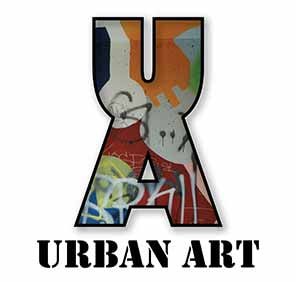One thing I can say about my work with certainty is that I am a colorist. I love to use lots of bold, contrasting colors in my paintings. But this didn't come to me naturally.
I initially learned how colors interacted from a painting teacher, Dr. Walter Ball, at Northern Illinois University. Ball knew more about color than anyone I have ever known.
I first heard Dr. Ball talk about color in a small painting class. The class had your typical assortment of college students. Some were slackers; the guy beside me fell asleep, while a few looked bored.
When Walter began discussing color, I felt like I was plugged into an electrical wall outlet! It was so exciting. The things that man knew about color! No one had ever made sense of color in terms I could comprehend.
In fact, before that lecture, I was scared of color. My previous work was often devoid of color. I didn't understand how to control color interactions.

After completing my undergrad degree, I took a master's in studio art with Dr. Ball as the head of my committee. During that time, Walter spoke of a book, Blue and Yellow Don't Make Green, by Michael Wilcox. I recall barely taking in the information concerning the book. It wasn't a lack of interest or that I was a poor student. The depth of Walters' knowledge ran so deep that my brain could only take in so much at a time!

To give you an example, while critiquing my artwork, Dr. Ball spoke about adding a small amount of a color, placing it carefully to draw attention to itself without dominating or separating from the rest of the painting. I understood that intellectually but couldn't get it in my artwork. Ten years after I graduated, I finally figured out how to do that in my art!
In 2006, I had the opportunity to teach Color Theory at the Art Institute of Indianapolis. While preparing for the class, I ran across the book Blue and Yellow Don't Make Green. At first, I didn't realize it was the book Dr. Ball had spoken to me about in the '90s. But as I read the book, a lightbulb went off in my head! Its contents became the next step in my evolution as an artist.
The author, Michael Wilcox, founded The School of Colour. Michael is an author, professional artist, conservator of artworks, lecturer, engineer, and inventor.

The book's basic premise is that there is no such thing as pure color. All paints have a color base. For example, yellow pigments have a green or orange base. Red has a violet base or orange, and blue pigments have a green base or violet.
With this knowledge, Wilcox recommends mixing colors with the same bases to achieve purist outcomes. For example, combine a green-based yellow with a green-based blue for a pure, bright green. The resulting hue will appear duller if you don't match the paint bases while mixing colors.
Using The School of Colour method means you only need two sets of yellows, reds, and blues to acquire all the colors required for a painting. Additionally, Wilcox recommends white and a few earth tones, such as ochers. He also provides a formula for mixing black, which is a gorgeous hue of black!

Another essential aspect of Wilcoxs' approach is to use only colors with solid light steadfastness. Paint light steadfastness is crucial to the longevity of a painting. With poor light steadfastness, some paints begin losing their color within months of exposure to light. Some pigments last longer, but not the test of time. Van Gosh's paintings are over a hundred years old, and some are losing their color.
I have used Wilcox's color approach since I first picked up his book. Anyone who took a color theory class with me was taught to use this method.
Thanks to Walter Ball for teaching me how to use color, and Michael Wilcox showed me how to mix colors properly. In turn, I have shared what I have learned with my students, so I hope to keep the cycle moving forward.

